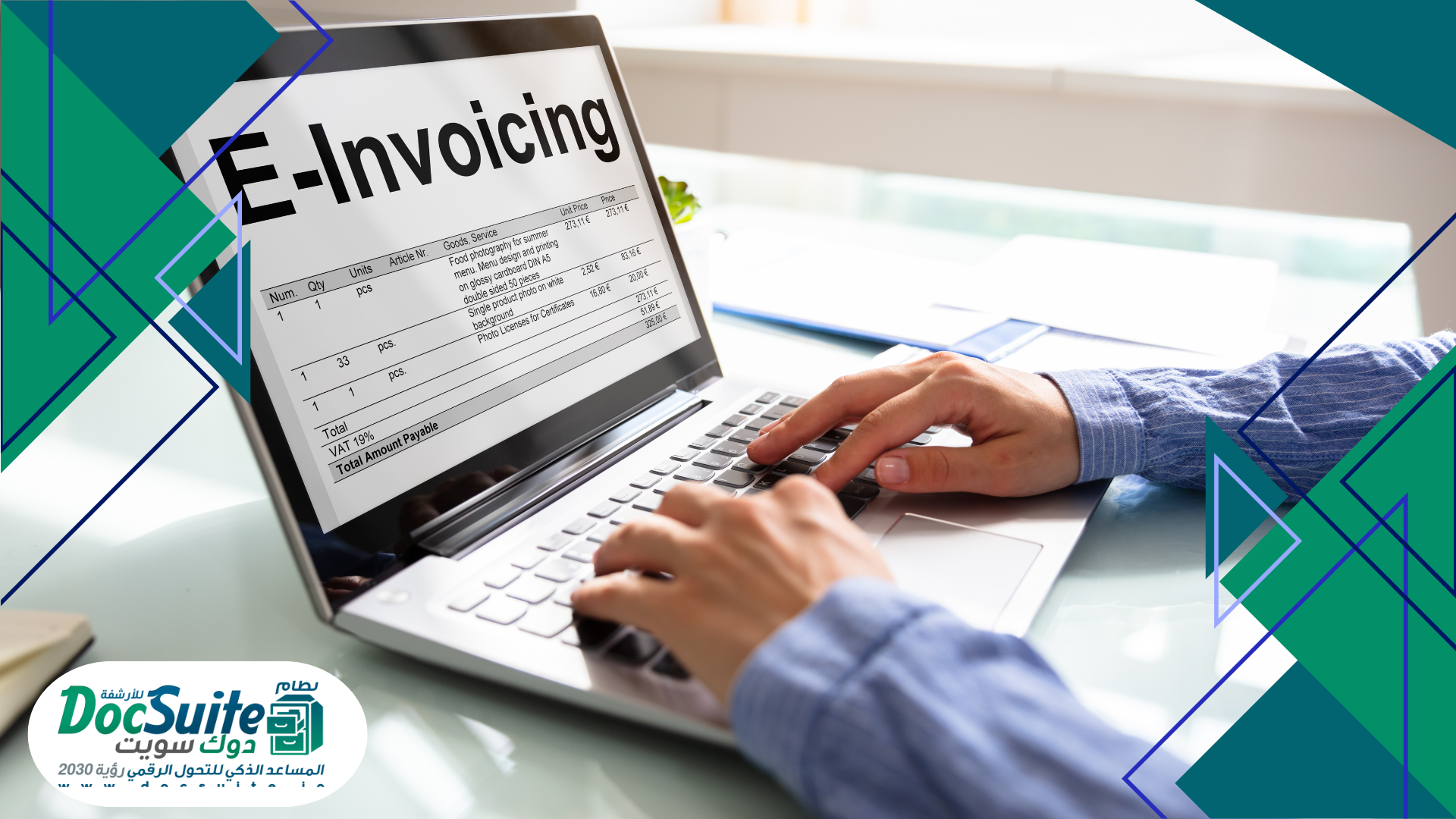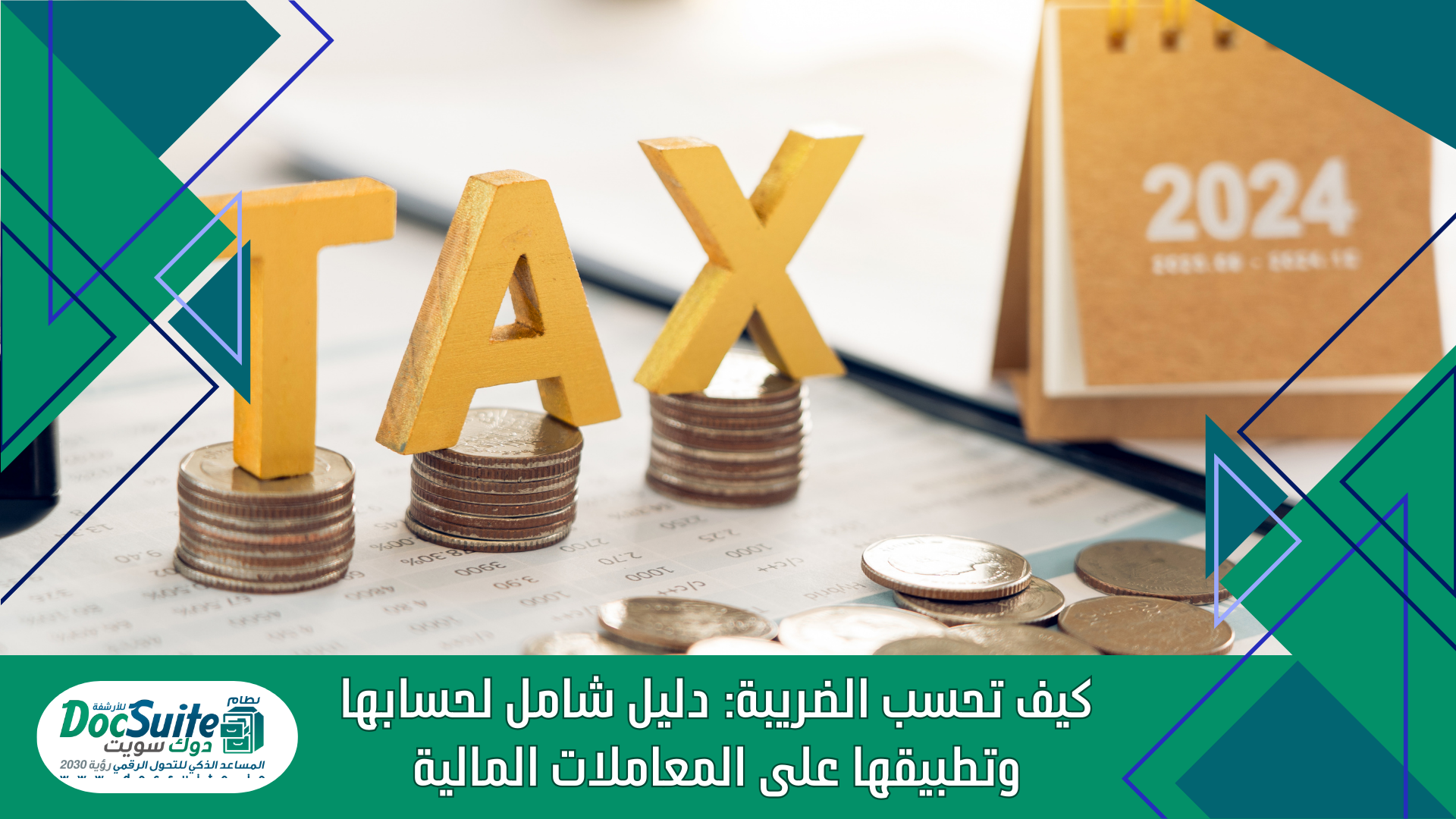فهرس الموضوع
How to Calculate Tax: A Comprehensive Guide to Calculating and Applying It to Financial Transactions
The tax calculation process is one of the basic pillars of the financial system, and requires institutions and individuals to have an accurate understanding of tax rates and the method of calculating them. With the development of technology and the emergence of electronic management systems, it has become possible to improve the efficiency of tax calculation more accurately and faster.
For example, modern management applications such as DocSuite, built with modern technologies, have contributed to simplifying this work by automating tax and administrative processes and making them more efficient and easier. This article will provide a detailed explanation of how to calculate tax, with a focus on the importance of using digital tools in managing tax accounts.
What is tax and its types?
Tax is defined as a financial amount imposed by governments on individuals and companies for the purpose of financing public services, infrastructure, health care, education, and other projects that contribute to achieving the welfare of society. Taxes come in many types, including value-added tax, income tax, sales tax, and corporate tax.
Understanding each type of tax is crucial to being able to calculate them accurately. For example, one of the most common types of tax is value-added tax, which is a tax imposed on goods and services at every stage of the supply chain, from production to final sale.
DocSuite, which is based on the automation of procedures, is an effective tool in managing and following up on tax operations, as it contributes to simplifying the processes of calculating taxes of various types, and making them more organized. It works to unify documents and record financial transactions easily, which makes institutions more capable of dealing with tax obligations in an efficient and reliable manner. It also enhances protection through cybersecurity technologies and makes work compatible with Saudi Vision 2030.
How to calculate VAT?
Calculating VAT requires understanding the tax rate imposed on the goods and services that the establishment trades. The VAT rate is often determined by the government, and varies by country and business activity. If the tax rate is 15%, this means that the establishment needs to add 15% of the price of the good or service as tax. For example, if the price of the good is 100 riyals, the VAT will be 15 riyals, making the total price 115 riyals.
Having a smart system like DocSuite makes this process much easier, as it enables the tax to be calculated automatically when entering the details of the financial transaction. The system automates the calculations and records them in record time, saving organizations time and effort, and reducing errors that may result from manual calculation.
DocSuite helps document these transactions in an organized manner, helping organizations comply with tax laws and provide accurate reports to relevant authorities, as well as reducing the administrative burden and facilitating access to tax records when needed.
How to calculate income tax for individuals and companies
The income tax calculation for individuals is different from the tax calculation for companies. For individuals, income tax is calculated based on the total annual income, and necessary expenses are deducted according to the applicable tax laws. For example, if the individual’s annual income is 50,000 riyals, and the income tax rate is 10%, the tax due will be 5,000 riyals, while the net income for companies is calculated after deducting operating expenses and production costs.
DocSuite helps manage these accounts by providing an integrated database of financial resources, which contributes to calculating taxes with high accuracy, and reduces the time required to prepare periodic tax reports. The system also allows tracking revenues and expenses, and organizing supporting documents, which helps companies access accurate and reliable financial information when submitting their tax returns.
This comes within a broader framework to achieve environmental and administrative sustainability supported by Saudi Vision 2030, as DocSuite contributes to reducing reliance on paper and shifting to a fully electronic work environment.

How can automation help simplify tax calculations?
With the advancement of technology, automation has become an effective way to simplify the tax calculation process, especially for large companies that deal with huge amounts of financial data. Instead of relying on manual calculations, intelligent systems such as DocSuite allow for instant financial data entry and tax calculation, which reduces human errors and saves time.
The system also provides advanced analytical capabilities that help companies make financial decisions based on accurate data, and enables them to anticipate tax errors before they occur.
With its smart services, DocSuite provides several advantages, including documenting all financial transactions electronically and storing documents securely using artificial intelligence technologies. It also contributes to improving administrative communication and organizing documents in a way that contributes to improving administrative efficiency and makes companies more capable of dealing with tax laws and their periodic updates.
The automation provided by DocSuite provides companies with the ability to track cash flow and adjust accounts in a way that enhances tax compliance and reduces the challenges that companies face in the area of tax.
Tax calculation is a fundamental process that requires accuracy and organization, and it is one of the important pillars in achieving financial stability for institutions. The importance of using modern technology in tax calculation comes from its ability to improve efficiency and simplify procedures, which contributes to reducing errors and making the process smoother. Using advanced applications such as DocSuite is a successful investment for companies, as it enables them to manage tax accounts effectively and enhances their compliance with tax regulations.
DocSuite is an effective way to transform financial and administrative operations into a smarter and more secure digital model, thanks to the automation and artificial intelligence technologies it provides, in line with Saudi Vision 2030, which aims to build a thriving digital society. These tools help companies focus on growing their business instead of being preoccupied with tax accounting procedures, making DocSuite a reliable partner in the journey of digital transformation and compliance with modern tax requirements.
The role of DocSuite in calculating the tax value
DocSuite plays a vital role in improving and facilitating the process of calculating the tax value for companies and institutions, as this system is distinguished by its ability to transform document and data management from traditional methods to integrated electronic management. DocSuite collects financial data accurately and quickly, which helps in calculating the required taxes easily according to the requirements of local laws, and avoiding human errors that may occur when using manual or paper methods. It also facilitates tracking changes in tax laws and updating data accordingly.
DocSuite leverages AI and automation to accurately adjust tax calculations, which means it analyzes data and automatically applies appropriate tax rates, giving users access to detailed and comprehensive reports on the amount of tax due. The system also ensures cybersecurity in protecting user data, which reassures companies about the confidentiality of their financial information and reduces the risks of data leakage.
Moreover, DocSuite organizes and stores tax documents electronically, making them easy to access when needed, whether for internal review or when submitting official reports to relevant authorities. This helps companies accelerate the tax compliance process and reduce costs related to managing paper documents, in addition to supporting the environmental sustainability goals of the Kingdom’s Vision 2030 by reducing paper consumption and moving to a sustainable and smart management system.
